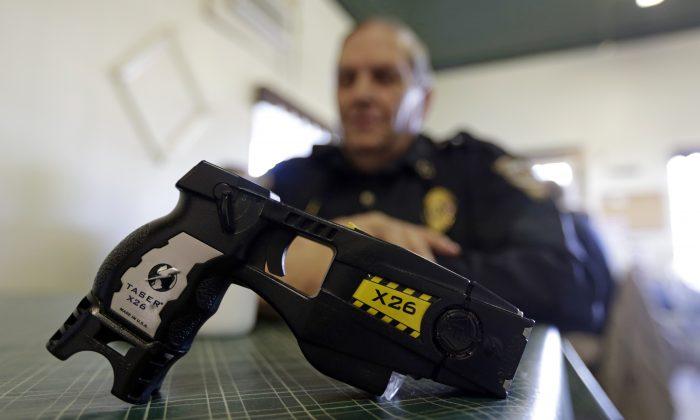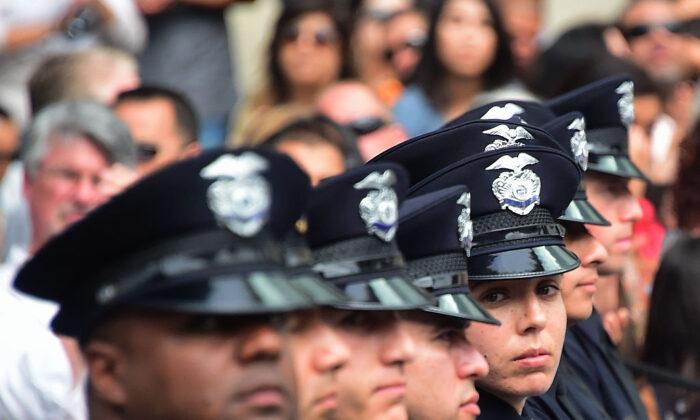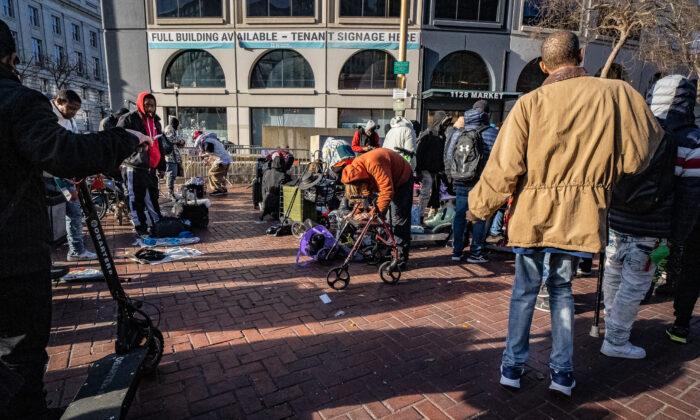The Los Angeles Police Department (LAPD) is looking into options for altering its tasers to limit the number of times an officer can fire to gain compliance from a suspect after a man died hours after an officer tased him six times in 42 seconds following a traffic incident earlier this month.
LAPD Chief Michel Moore said during the Jan. 24 police commission meeting that he was looking into whether “a stoppage” could be added to the department’s electroshock weapons to deactivate them for a minute or two between firings.
Moore said the death of Keenan Anderson warrants “consideration of working with the manufacturer to consider establishing a limit.”
‘Erratic Behavior’ After Car Crash
The incident began after Anderson, cousin of Black Lives Matter co-founder Patrisse Cullors, was involved in a traffic accident on Jan. 3 in Venice, California. The LAPD said in a Jan. 6 statement that he was “running in the middle of the street and exhibiting erratic behavior” after the accident.When the officer arrived at Lincoln and Venice boulevards, Anderson was being evaluated for driving under the influence and was told several times to sit on the sidewalk, according to the video. Appearing to be restless, Anderson kept telling the officer someone was trying to kill him. The officer repeatedly asked him to “take some deep breaths for me.”
Later in the video, Anderson then kept getting up from the sidewalk and running away into traffic as additional officers arrived. Officers ultimately detained him, attempted to place him in handcuffs, hobbled him at his ankles, and tased him.
“As officers contacted Anderson, he began to resist, resulting in a use of force,” the LAPD said in a Jan. 23 statement. “Officers struggled with Anderson for several minutes, utilizing a TASER, bodyweight, firm grips, and joint locks to overcome his resistance.”
Anderson was transported to a hospital in Santa Monica, California, where he later died after a cardiac arrest. The cause of death hasn’t been determined.
Family Suing City
The family of Anderson filed a $50 million damages claim on Jan. 20 against the City of Los Angeles.Attorney Carl Douglas announced the claim alongside civil rights attorney Ben Crump, who previously represented the family of George Floyd in Minnesota.
The claim, a precursor to a lawsuit, alleges that police officers involved in the incident used excessive force and that the LAPD has a pattern of such against black men.
Police Union Defends Officers’ Responses
The Los Angeles Police Protective League, the union that represents hundreds of active LAPD officers, issued a statement in response to the claim, saying that Anderson escalated the confrontation with his behavior.Union director and LAPD Detective Jamie McBride told The Epoch Times that the main officer involved in the incident did an “absolutely fantastic job” and that the union supports him.
“He was extremely calm trying to de-escalate him. That’s exactly the training we get,” he said.
When it comes to the tasing, McBride said officers “can reuse it as many times as possible to gain compliance.”
He said officers attempted to detain Anderson because of his involvement in the traffic collision, but Anderson’s resistance warranted the use of a taser.
“The normal person is going to abide by the officer’s direction,” McBride said. “When the individual doesn’t go by what the officer is asking ... the officer [is going] to question, ‘Why is he not doing it?’”
The LAPD has a mental health second response team, Systemwide Mental Assessment Response Team (SMART), that can be deployed after a scene is secure and stabilized.
However, Debbie Thomas, an officer with the department for 13 years, told The Epoch Times that in the situation with Anderson, there was no possibility of SMART working alongside officers trying to get the situation under control.
“There’s absolutely no way that any patrol officer would allow an unarmed clinician who has zero tactical experience to be faced with such a volatile and potentially deadly situation,” she said.





